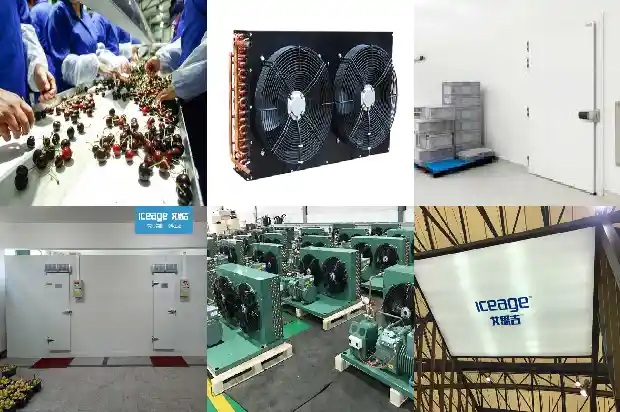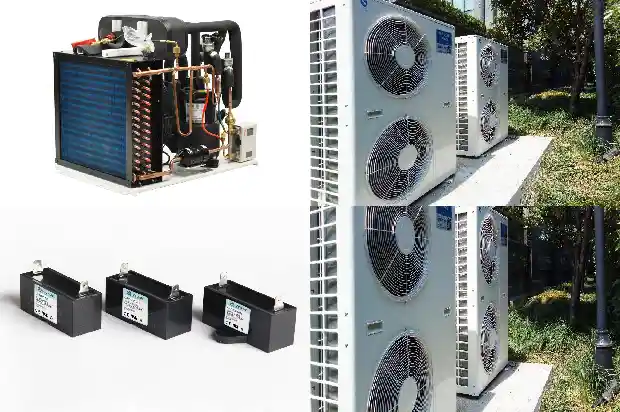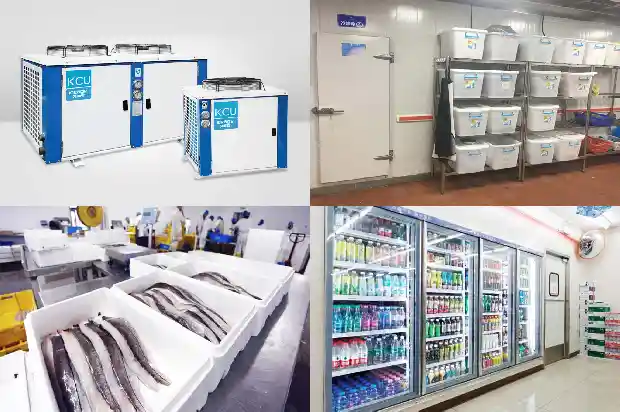Operation and Maintenance Process of Cooling Towers
2025-02-28
The correct operation methods and requirements of the cooling tower are as follows:
(1) The number of cooling towers in use should match the number of units in operation.
(2) Close the inlet and outlet valves of the cooling towers whose fans are not in operation to prevent the cooling water from flowing through the unused towers.
(3) For the temporarily added cooling tower fans, after turning off the fans, do not forget to close the inlet and outlet valves of the corresponding towers.
(4) Check the operation status of the cooling tower after starting up each shift. If it is found that the cooling water is flowing through the cooling tower whose fan is not in operation, close the inlet and outlet valves of the tower in a timely manner and adjust the water level of the water tray properly. For the condensers, evaporators and screw chillers in the air conditioning system, some units are equipped with electric valves, but the electric valves are prone to failure and malfunction. Therefore, inspection should be strengthened to ensure the normal and correct operation of the system. The refrigeration process is actually a heat exchange process.
(1) The number of cooling towers in use should match the number of units in operation.
(2) Close the inlet and outlet valves of the cooling towers whose fans are not in operation to prevent the cooling water from flowing through the unused towers.
(3) For the temporarily added cooling tower fans, after turning off the fans, do not forget to close the inlet and outlet valves of the corresponding towers.
(4) Check the operation status of the cooling tower after starting up each shift. If it is found that the cooling water is flowing through the cooling tower whose fan is not in operation, close the inlet and outlet valves of the tower in a timely manner and adjust the water level of the water tray properly. For the condensers, evaporators and screw chillers in the air conditioning system, some units are equipped with electric valves, but the electric valves are prone to failure and malfunction. Therefore, inspection should be strengthened to ensure the normal and correct operation of the system. The refrigeration process is actually a heat exchange process.
Maintenance of the Cooling Tower:
The maintenance process of the cooling tower is divided into three stages, namely the cleaning and maintenance after shutdown, the inspection and debugging before startup, and the inspection during formal operation.
(1) Cleaning and Maintenance after the Cooling Tower is Shut Down
The maintenance process of the cooling tower is divided into three stages, namely the cleaning and maintenance after shutdown, the inspection and debugging before startup, and the inspection during formal operation.
(1) Cleaning and Maintenance after the Cooling Tower is Shut Down
- Water Distribution System
① Check whether the main water pipe, branch water pipes and spray nozzles of the cooling tower are damaged or loose, and repair and fix them in a timely manner. Thoroughly remove the dirt inside the water distribution pipes and spray nozzles to ensure the smooth flow of the water pipes and the uniform water distribution of the spray nozzles.
② Thoroughly flush the water tray and the outlet filter screen cover of the cooling tower to avoid the accumulation of scale and dirt blocking the pipes. After cleaning, open the drain valve to drain all the water in the water tray to prevent it from being damaged by freezing.
③ Check whether the water tray and the tower feet are leaking. If there are any leakage points, apply glue for repair in a timely manner. - Heat Dissipation System
① Clean all the heat exchange materials (fillings) of the cooling tower, and thoroughly remove the scale and dirt on the surface and between the holes of the heat exchange materials to ensure the cleanliness of the heat exchange materials. Repair and replace the heat exchange materials during disassembly and assembly. When filling, pay attention to placing them closely without leaving gaps.
② Clean the water baffle curtain and the sound-absorbing blanket to remove the dirt. Repair and replace the damaged parts. When stacking the water baffle curtain, it is required to be closely arranged to prevent water from splashing. Fill the cooling tower with water and check for any leakage (especially at the joints of the tower body). If there is leakage, replace the seals.
- Transmission System
① Motor: Check whether the wiring terminals of the motor are in good condition, whether the motor rotates normally, seal the motor junction box, lubricate the motor bearings with oil, and repaint the motor housing. For long-term shutdown, it is recommended that the owner run the motor for at least 3 hours per month to keep the motor coils dry and lubricate the bearing surfaces.
② Speed Reducer: Check whether the speed reducer rotates normally. If there is any abnormal sound, replace the bearings of the speed reducer immediately.
③ Belt and Pulley: Adjust the jackscrew, loosen the belt to extend the service life of the belt. Check whether the belt is damaged or cracked. If necessary, it is recommended that the owner replace the belt with a new one. Check the levelness of the pulley and the motor frame, tighten the loose bolts, and replace the rusted bolts.
④ Fan: Clean the dirt on the surface of the fan blades, check the angle of the fan blades, the gap between the fan blades and the wind cylinder, and make adjustments. - Appearance of the Tower Body
① Thoroughly clean the wind cylinder, the tower and the air inlet guide plate to ensure the clean and beautiful appearance.
② Retighten the bolts at all parts and replace the rusted bolts.
③ Check whether there are any damages or cracks on the appearance of the tower body, and repair them in a timely manner.
④ Check whether the vertical seams of the tower body wall panels are tight. If necessary, apply glue again for repair. - Accessories of the Cooling Tower
① Check whether the automatic water replenishment device - the float ball is damaged and whether it works normally. If any abnormalities are found, repair or replace it in a timely manner.
② Retighten the bolts of the iron parts of the cooling tower, replace the rusted bolts, and repaint the rusted iron parts.
③ Check whether the tower body flanges of the inlet and outlet water pipes and the water replenishment pipe are damaged or leaking. After the cleaning and maintenance of the cooling tower are completed, it is recommended that the owner wrap and seal the wind cylinder of the cooling tower with a colored striped enclosure cloth to prevent sundries from entering the interior of the cooling tower.
(2) Inspection and Debugging before the Cooling Tower is Started Up
① Remove the cover of the wind cylinder, adjust the jackscrew, and adjust the tightness of the belt.
② Carefully check whether the motor and the speed reducer of the transmission system of the cooling tower are operating normally.
③ Check and clean the dirt in the water tray and the filter screen of the cooling tower, release water to check the tightness of the water tray and the tower feet, adjust the position of the float ball to make the water level of the water tray meet the usage requirements.
④ Adjust the angle of the fan blades, measure the current of the motor to make it reach the standard of the optimal working condition.
⑤ Adjust the inlet and outlet valves of the cooling tower to make the water flow rate of the cooling tower meet the requirements. Once these requirements are met, the cooling tower can be officially started up.
(3) Inspection during the Operation of the Cooling Tower
① Regularly inspect the cooling tower in operation, solicit the opinions of users, and understand the usage situation of the cooling tower.
② Carefully test the technical data such as the inlet and outlet water temperatures of the cooling tower and the operating current of the motor.
③ Carefully check the operating status of the transmission devices such as the motor and the speed reducer. Check the actual working condition of the water distribution system.
④ When a fault is found, deal with it immediately.
Source: Internet.
Related Articles
- Analysis of the Composition, Control and Operation Process of Cold Storage System
- Reasons for Compressor Oil Deterioration and Oil - adding Operations
- Operation and Precautions of Frozen and Refrigerated Auxiliary Equipment
- Oil Cooling Methods and Oil - changing Operation Procedures for Screw Compressors
- Refrigeration System: Copper Pipe Welding and Flushing Operations
- Essential for Maintenance! Parameters and Phenomena of Normal Operation of Refrigeration and Heating Systems
- What is the Correct Operation Method of the Distribution Box during Cold Storage Installation?
- Operation of Screw - type Water - cooled Chiller Units
- Considerations in Selecting Packaged Air Conditioners and Their Heat Recovery Operations
- Common Malfunctions in the Operation of Cold Storage
- What Are the Three Essential Conditions for the Safe Operation of the Refrigeration System?
- Common Issues in Chiller Operation and Solutions
- Operations and Precautions for Multi - split Air Conditioners: Blowing Debris, Air Tightness, Vacuum Drying, and Refrigerant Charging
- What Should Be Done When the Condenser Fan Doesn't Rotate During Operation?
- Experience Sharing on Refrigeration Welding Operations
- Maintenance and Operation of Freezing and Cold Storage Warehouses
- Cooling Operation of Ammonia Refrigerated Cold Storage
- Water-cooled Screw Chiller: Operation and Maintenance
